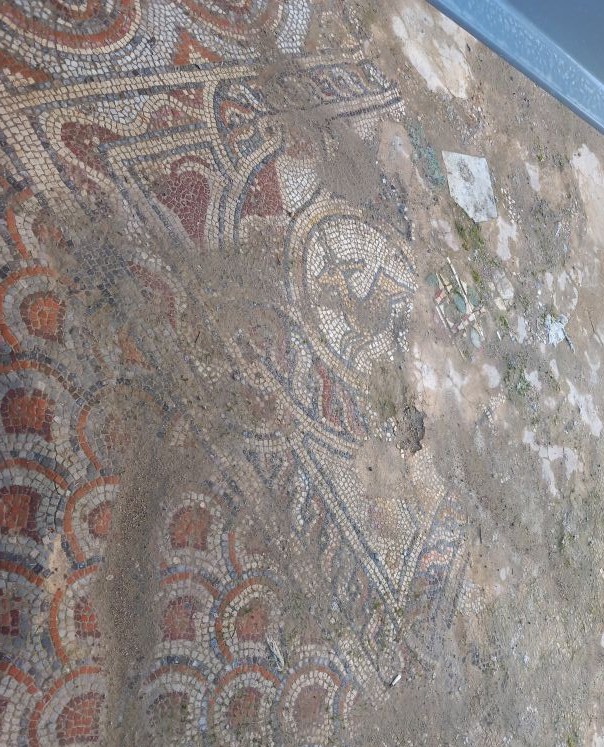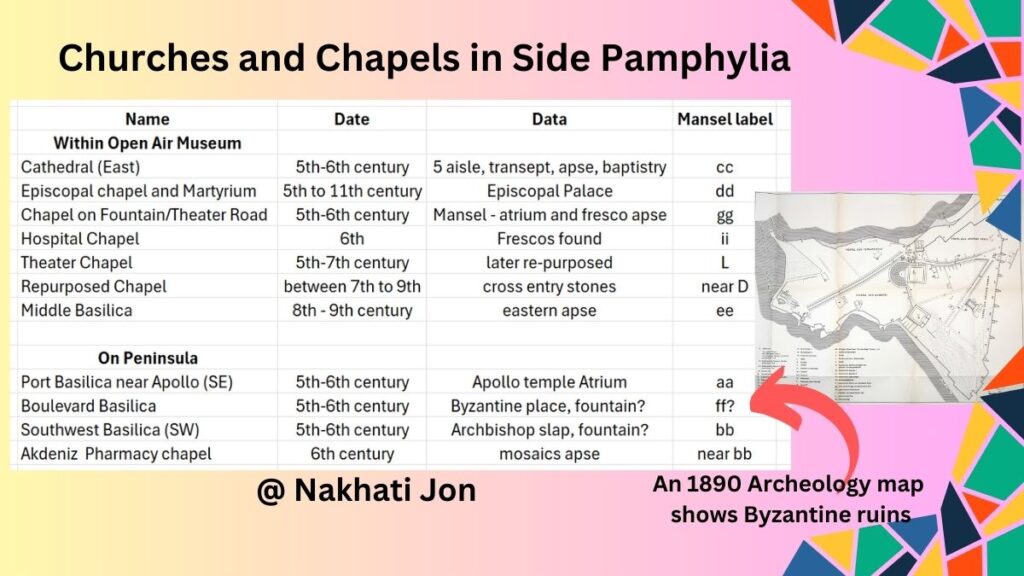- The Byzantine Episcopal Influence on the History of Side, Pamphylia
- Exploring Side, Pamphylia Hidden Byzantine Monuments
- The Lost Metropolis Episcopal Palace in Side, Pamphylia
- Discovering the Repurposed Chapel in Side Open Air Museum
- The Hidden Mosaics among the Side Market Shops – Part one
- The Hidden Mosaics among the Side Market Shops – Part Two
- The Hidden Mosaics among the Side Manavgat Shops – Part 3
- Hidden Things From Side’s Fountain to Grand Theater
- Hidden Crosses in the Side Archeology Museum
- Side’s Fascinating Basilica near Apollo Temple
- Analyzing the 12 churches and chapels of Side, Pamphylia
- Analyzing the Synagogue in Side, Pamphylia
Mosaics command attention, demonstrating the artist’s ability to arrange stones into thought-provoking images skillfully. At Aling Baby & Cafe and Thyma Cafe in Manavgot, the mosaics and crosses unmistakably highlight the rich Byzantine heritage of Side, Pamphylia.
Aling Baby & Cafe’s Deer Mosaic (Map H & I)
My wife and I were about to leave the town when we stumbled across this mosaic, one of the prettiest in the town. When we went by, they were putting the glass cover on the area, so I could not see what was further in. (See my video on this). Amazingly, we saw the deer in mosaic, which pleased our eyes.
The deer in mosaic is often depicted in Byzantine art and has been found on pulpits and in artwork.[1]Phrygia Museum in Kütahya, Turkiye, and the carvings of the Throne of Maximianus found in Ravenna, Italy. Also, the mosaic next to Ami Leder seems to be the same pattern, so it is possible that the same artisan did it. The imagery shows forth love and a longing like the deer. Psalm 42:1-2 says, “As a deer pants for flowing streams, so pants my soul for you, O God. 2 My soul thirsts for God, for the living God. When shall I come and appear before God?” (ESV)

The consistent presentation of biblical symbols encourages the idea that a Christian owned this location over a thousand years ago when these were made. In stark contrast, the secular civic art of the Byzantine period predominantly portrayed scenes of human activities, such as hunting and battle. Similarly, Roman religious mosaics centered around their gods. However, the mosaics in Side Old Town unmistakably focus on the cross, with patterns like Solomon’s knot highlighting a distinct metaphysical and spiritual realm.
Thyma Cafe
The walking tour ends here with the hidden mosaics under the glass window in the restaurant’s seating area. Without sitting for at least a beverage, these items are a challenge to see. I suspect the capitals near the edge toward the water were from one of the Basilicas in the Old Town, or this gives a hint to a possible fourth basilica on the Peninsula.
The multiple mosaics in the town primarily feature Christian themes, including crosses, deer, and angels—notably, no hunting scenes, Roman gods, or mythical imagery are present. I believe the influence of the Episcopal Palace, along with at least seven churches and chapels in the area, played a significant role in the selection of these mosaic designs. The Old Town of Side takes great pride in preserving and honoring these ancient and beautiful mosaics. I am confident that many visitors will come to admire them once they learn about the town’s unique historical mosaics.
Here is a list of possible Churches and chapels that may connect to these crosses. On the ancient map of the city, near this location is the Pretorium, the official residence of the Roman military general who became governor under the Byzantine. Maybe the Byzantine representative’s headquarters marked the area with crosses.

If you are in Antalya or Istanbul, check out my walking tours there.
Further explorations:

References
| ↑1 | Phrygia Museum in Kütahya, Turkiye, and the carvings of the Throne of Maximianus found in Ravenna, Italy. |
|---|
[…] The Hidden Mosaics among the Side Shops – Part 3 […]